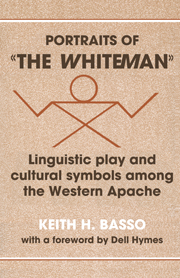Book contents
1 - Indian models of “the Whiteman”
Published online by Cambridge University Press: 05 July 2015
Summary
An Indian, who probably wasn't joking at all, once said, “The biggest of all Indian problems is the whiteman.” Who can understand the whiteman? What makes him tick? How does he think and why does he think the way he does? Why does he talk so much? Why does he say one thing and do the opposite? Most important of all, how do you deal with him? Obviously, he is here to stay. Sometimes it seems like a hopeless task.
—Harold Cardinal (The Unjust Society: The Tragedy of Canada's Indians)It has always been a great disappointment to Indian people that the humorous side of Indian life has not been emphasized by professed experts … Indians have found a humorous side to nearly every problem and the experiences of life have generally been so well defined through jokes and stories that they have become a thing in themselves … The more desperate the problem, the more humor is directed to describe it.
—Vine Deloria, Jr. (Custer Died for Your Sins: An Indian Manifesto)Making sense of other people is never easy, and making sense of how other people make sense can be very difficult indeed. But, as Harold Cardinal observes, it is something that must be done, especially when the welfare of whole societies may be at stake. American Indians have been trying to make sense of Anglo-Americans for a long time, and today, as contact with their “biggest problem” grows increasingly frequent and progressively more intense, the understandings they have reached – their conceptions of who ‘the Whiteman’ takes himself to be, how he construes his world, why he behaves as he does, and what, in the end, all this reveals about the sort of human creature he is – seem eminently deserving of ethnographic study. This essay is intended as a step in that direction.
- Type
- Chapter
- Information
- Portraits of 'the Whiteman'Linguistic Play and Cultural Symbols among the Western Apache, pp. 1 - 18Publisher: Cambridge University PressPrint publication year: 1979



